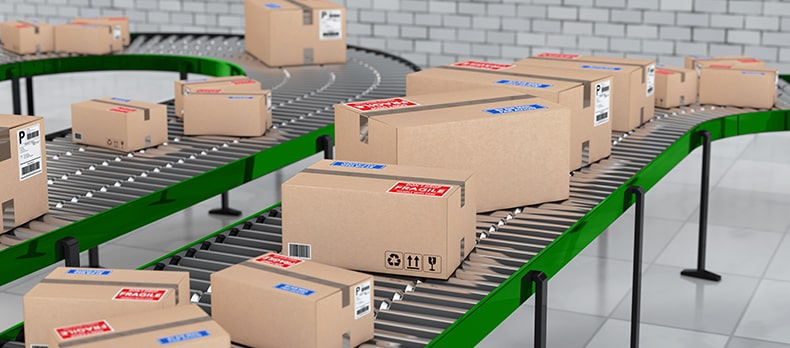
- Conveline Systems
- 10th Jan 2022
- Manufacturing
Conveyors are indispensable within the production plants.
Usually, they are classified by their use in two types: for process and for end of line.
Process Operations:
When handling processes for uniform products (preparation, filling, and packaging) such as cans, bottles or boxes, a conveyor that takes the product from one area to another is essential.
These operations handle small, medium, and high flows. However, they will hardly achieve the required productivity if they do not have conveyors to support the product's handling. The conveyors can be used in a single line or mass type (several products simultaneously in several lines).
These conveyors are manufactured according to the specific type of company and product, and there is a wide range of these, which are often made of stainless steel or aluminium, particularly in the food and beverage, pharmaceutical and cosmetics industries.
Apart from the flow, conveyors usually are essential in the process due to the repetitiveness of tasks of this sector, which must be very productive.
End of line:
When the product is already inside another secondary packaging (tray, box, package) it must be transported to the warehousing, palletizing, or loading dock. The most practical and economic way is often the use of conveyors. This alternative provides greater fluidity to the product and allows maximum cleaning in the production area.
Often, different packaged products from different production lines are combined and it is necessary to separate them by product type or other criteria before being stored or going to the final customer; here is when conveyors are very helpful to the automatic sorters that allow classification without human intervention with flows boxes or packages per minute as per the requirement. Thus the operation becomes very reliable and highly productive, in addition to sending information in real-time to your central control system.
Determining the variables of the solution will depend on the application, the type of product to be handled and the objectives of your company. Before making any decision on intralogistics automation, you must thoroughly analyse the project's viability according to the expected return on investment.
Recent Posts

Conveyor Rollers Manufacturer
February 24, 2025

Best Vertical Lifter Conveyor for saving valuable floor Space
February 24, 2025

What Are Pallet Conveyor Systems? How it will be Helpful
February 24, 2025

Complete Guide: Truck Loading Unloading Conveyor
February 24, 2025

Overview of Flexible Roller Conveyor
February 24, 2025
